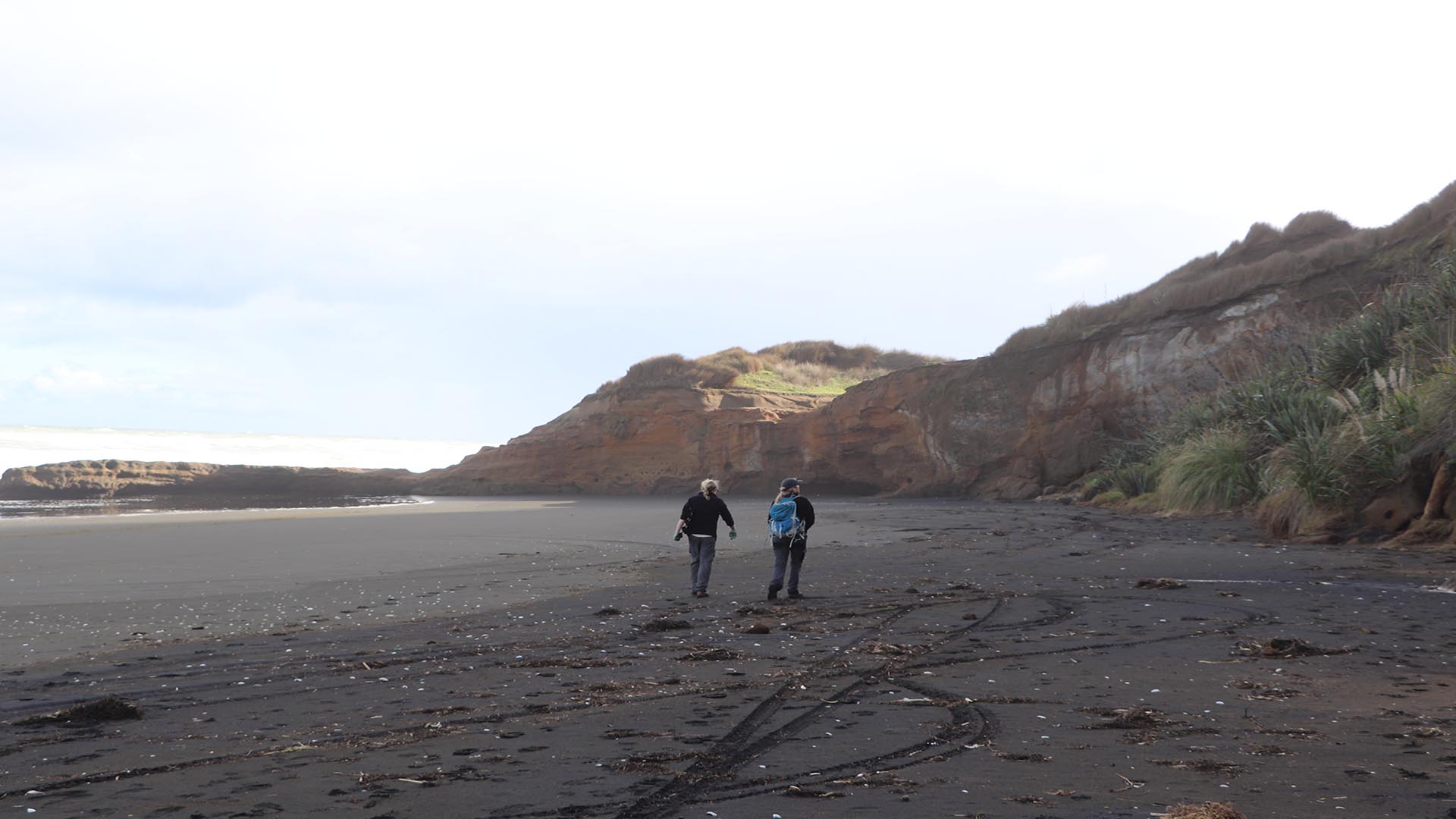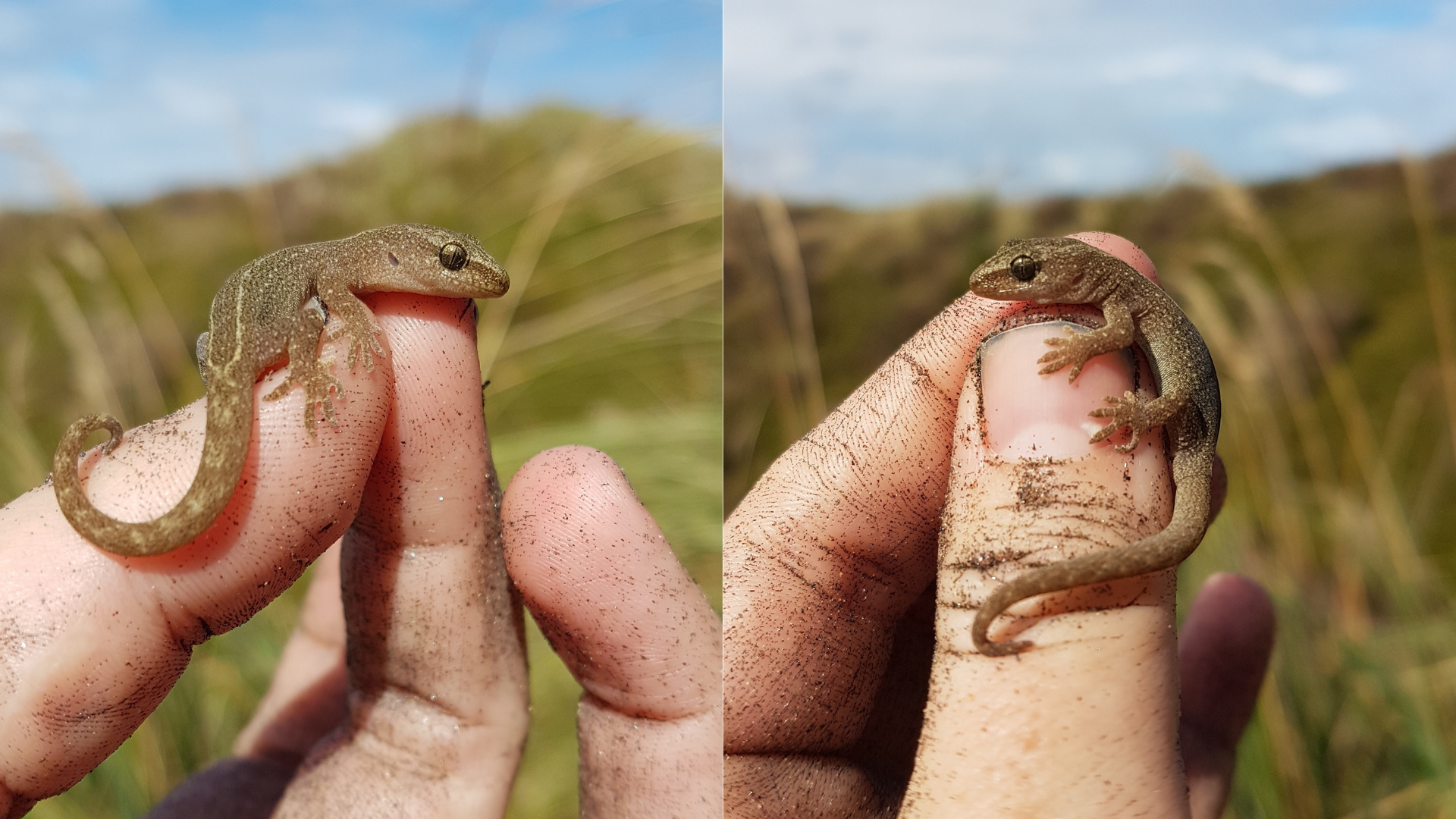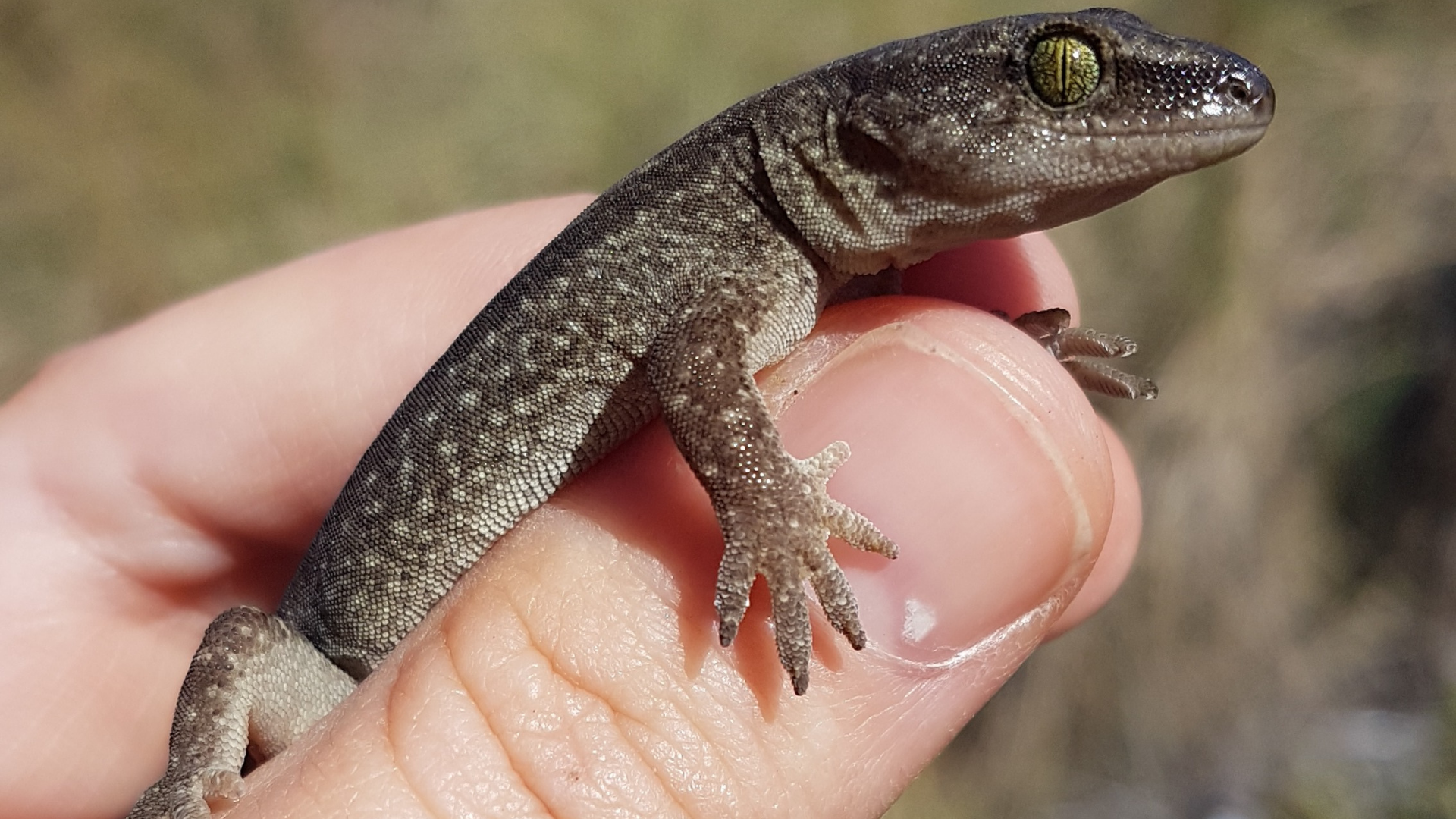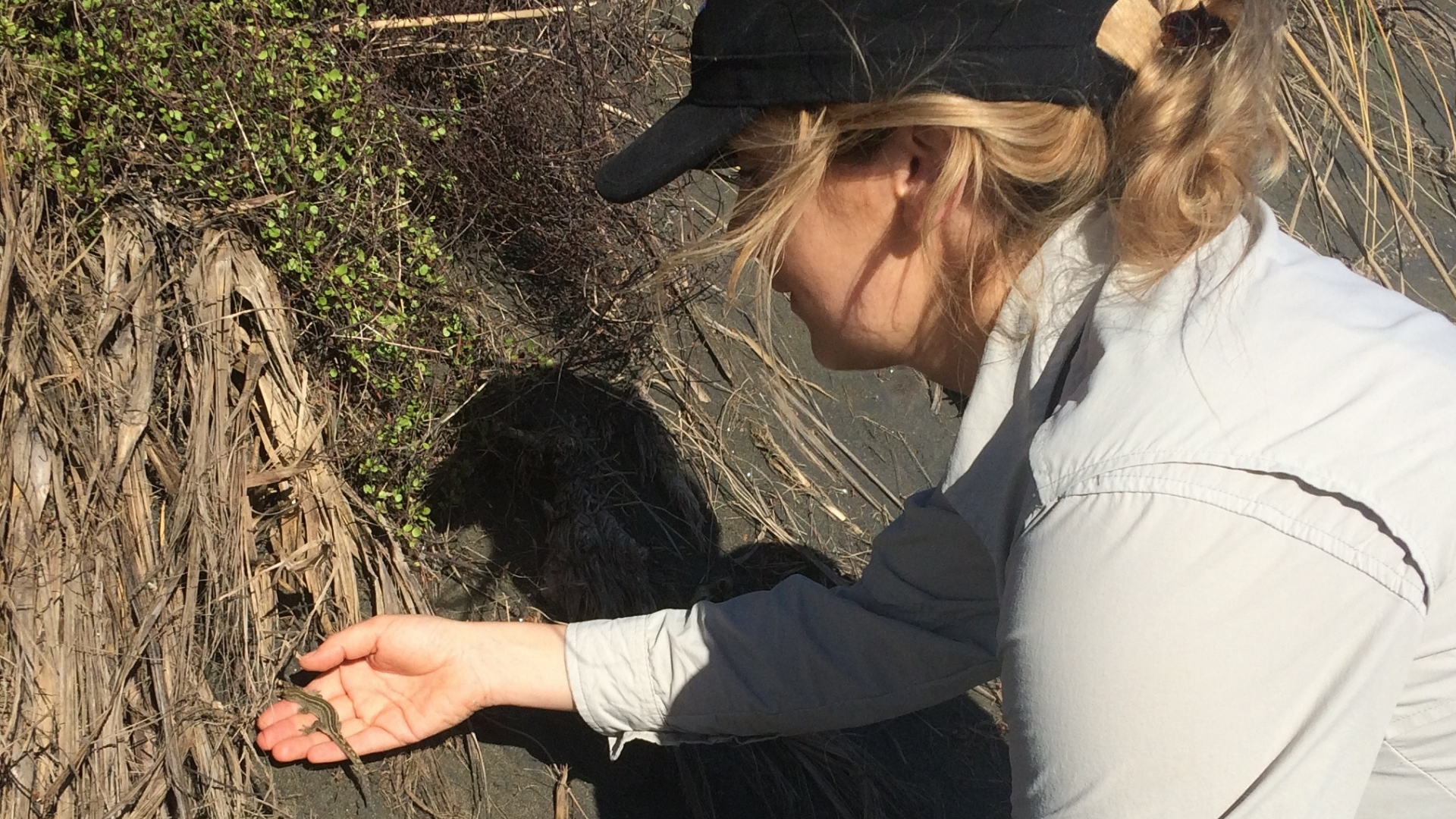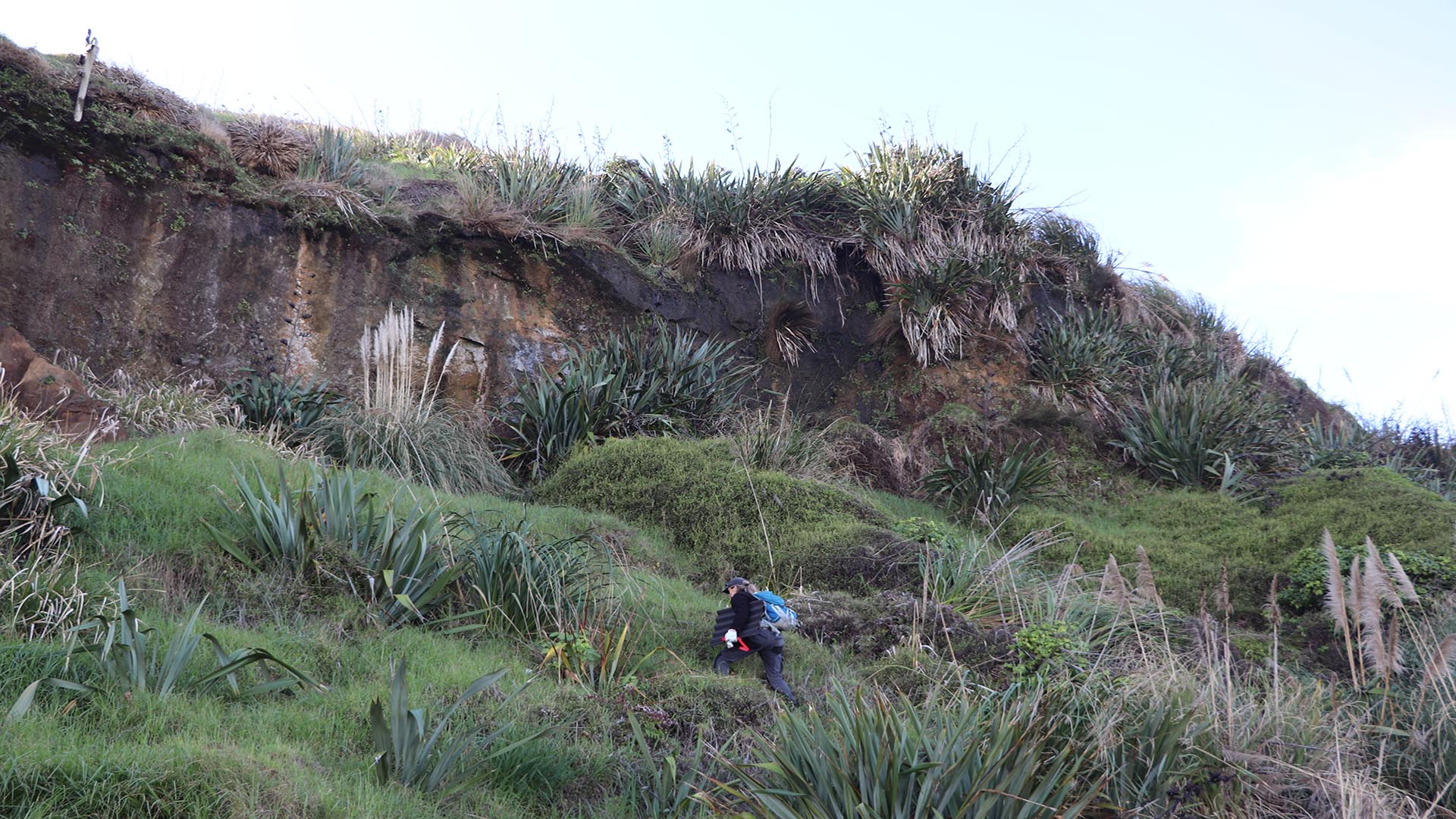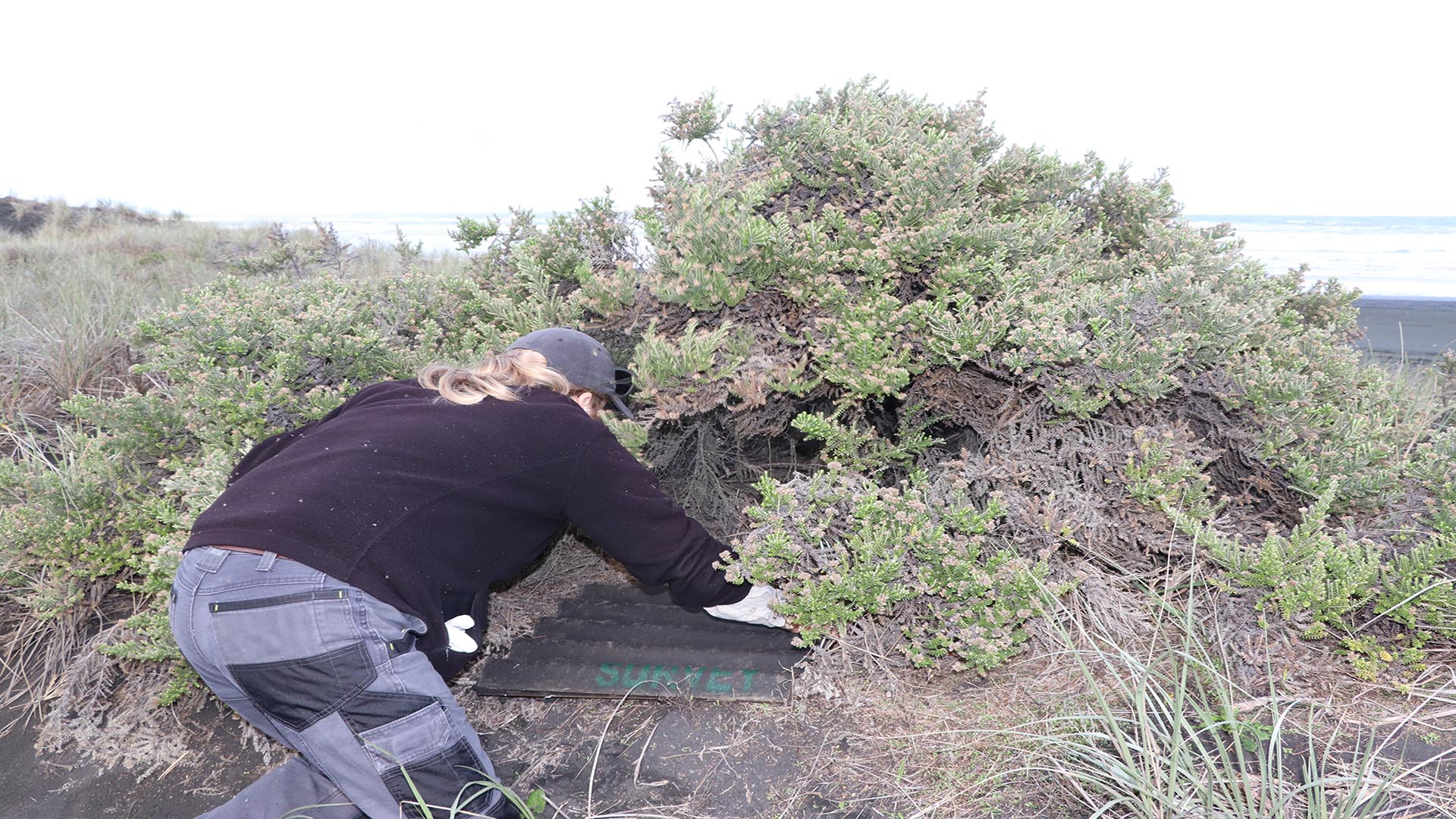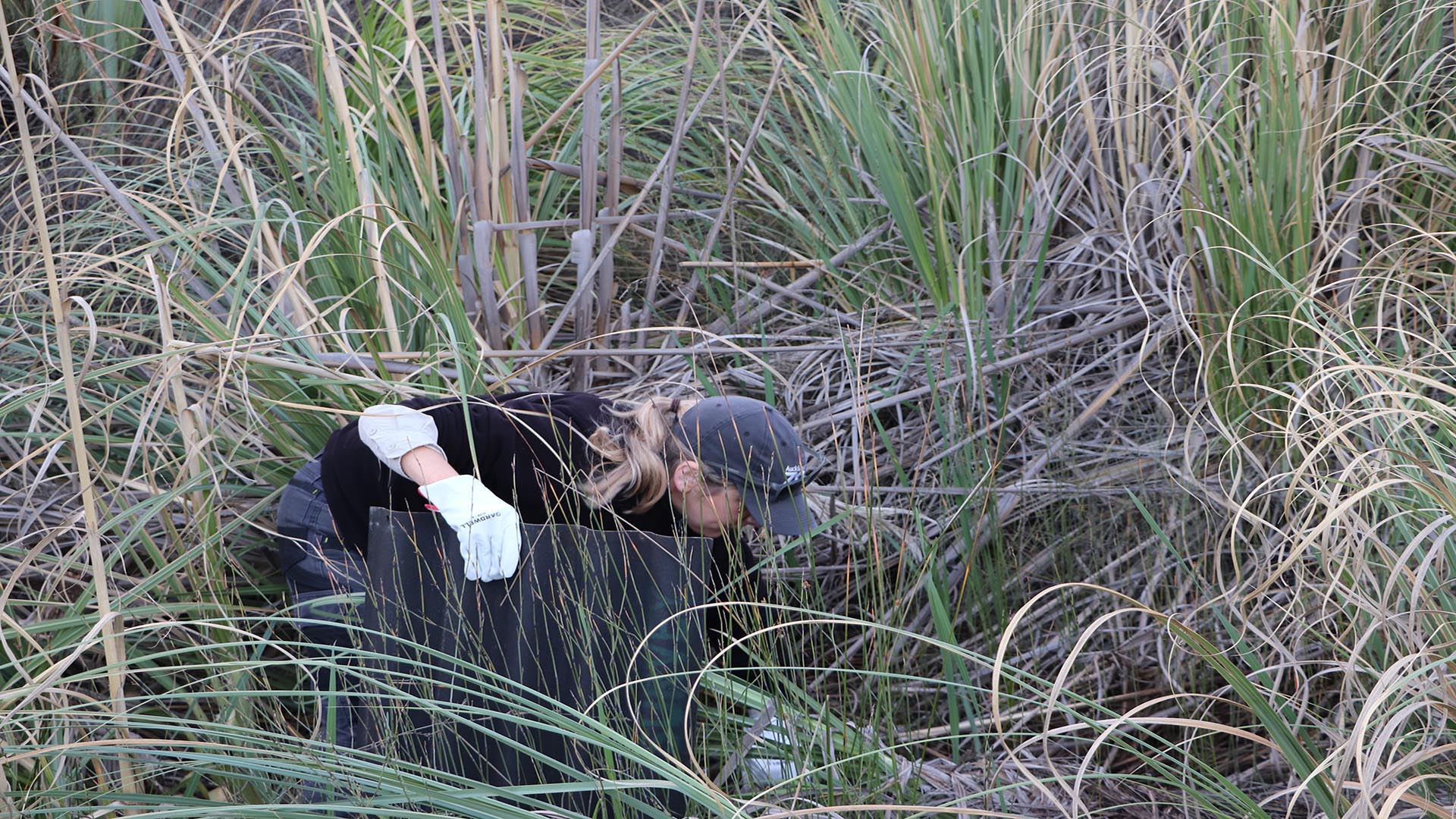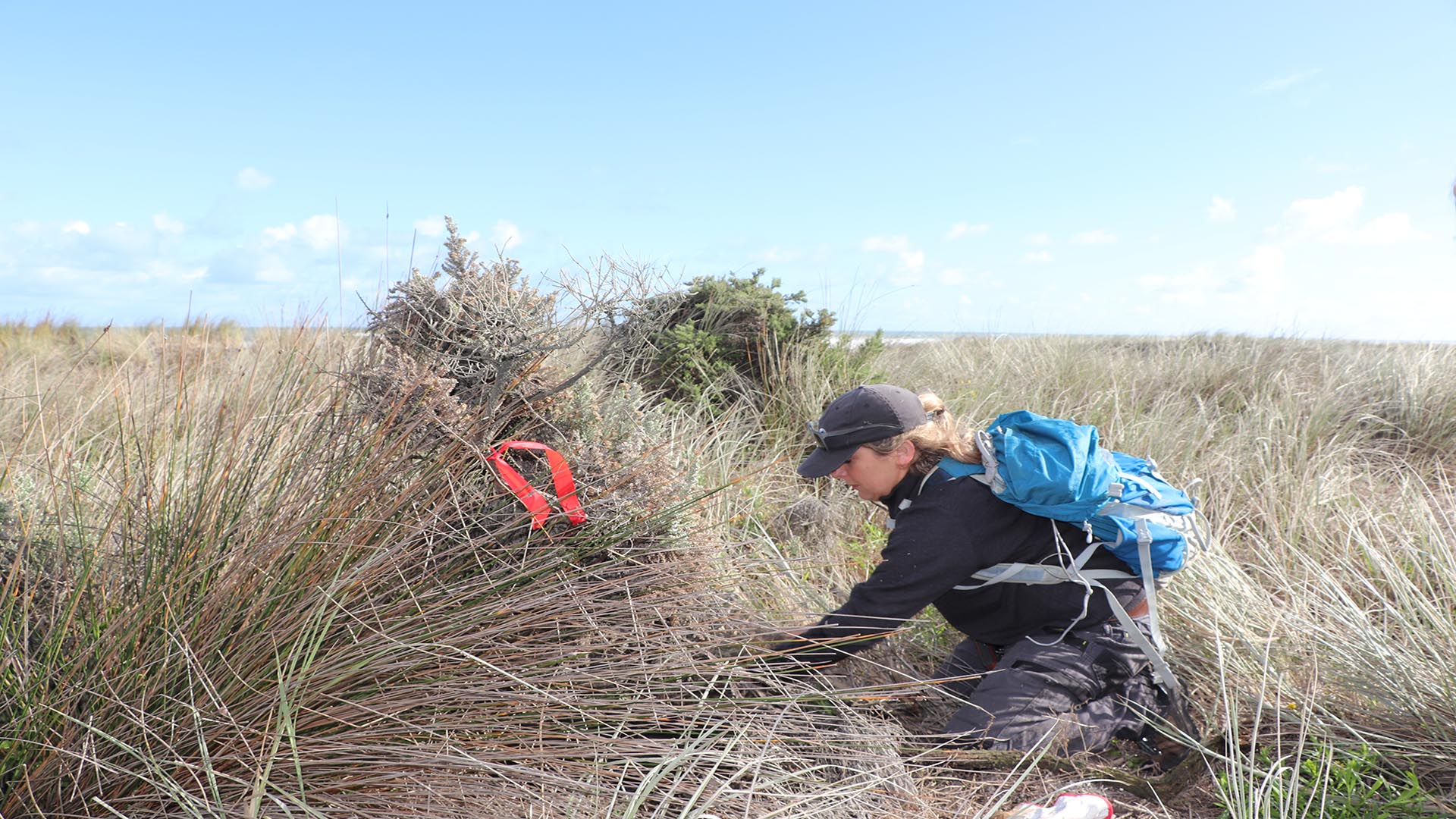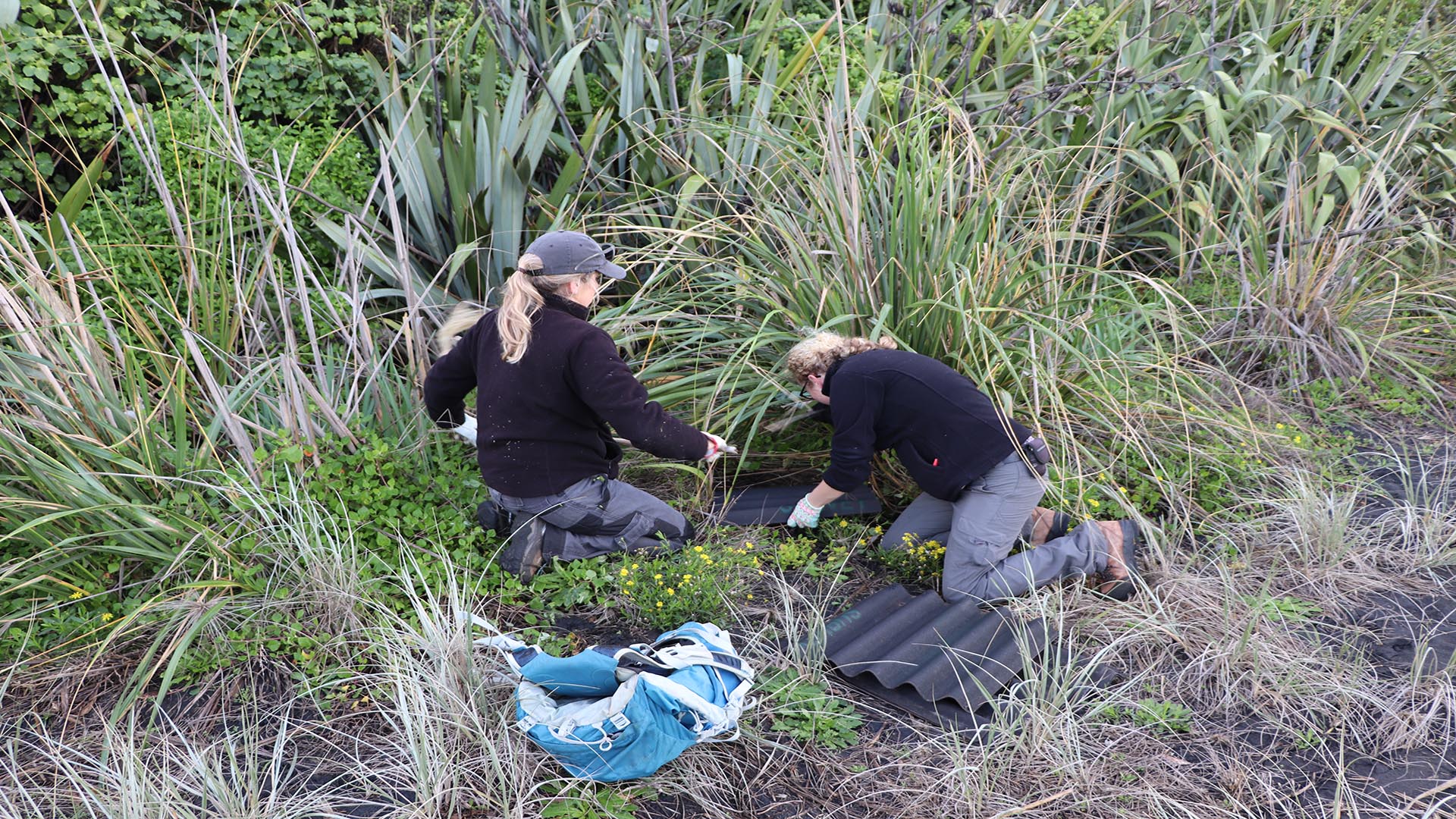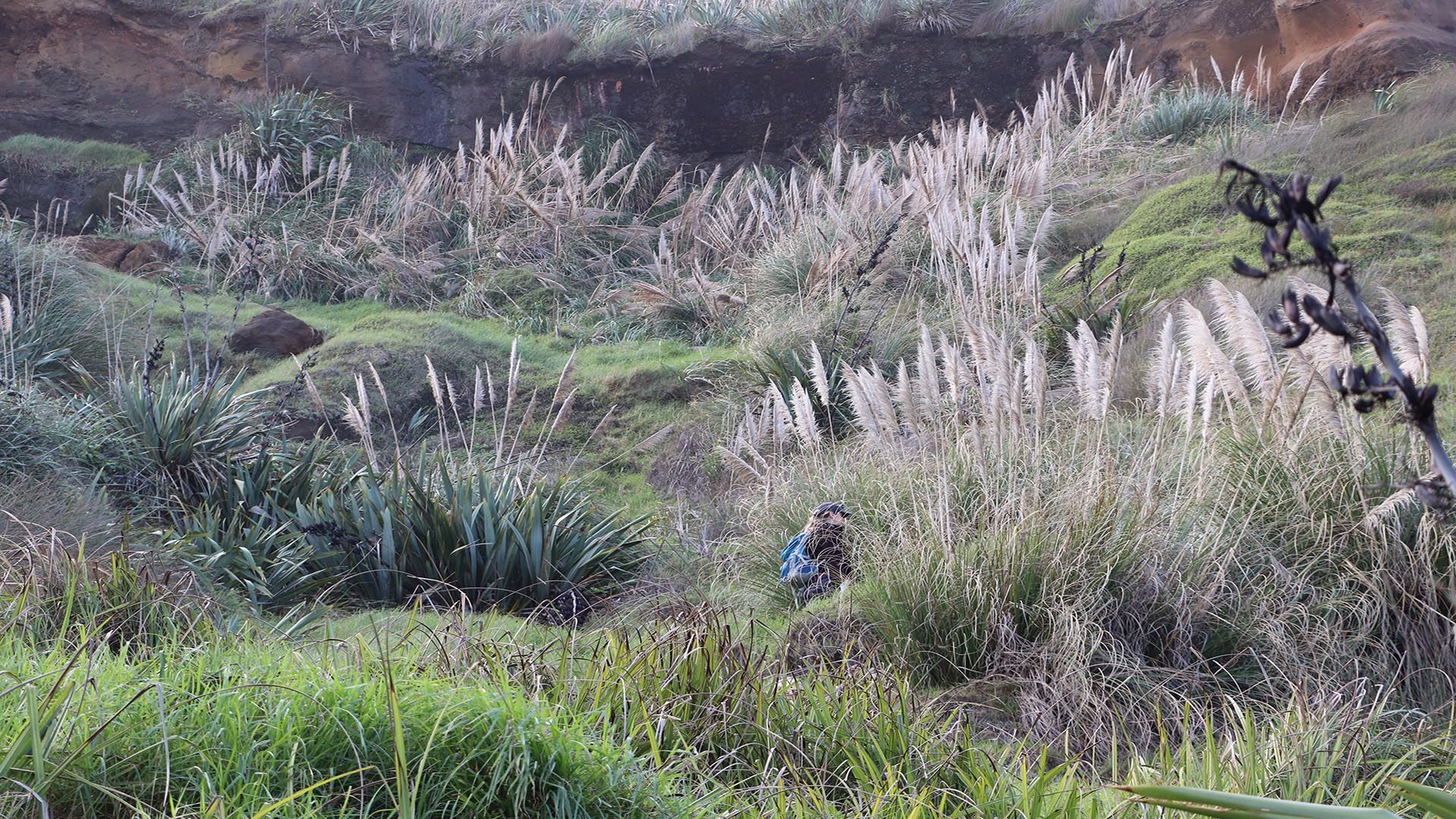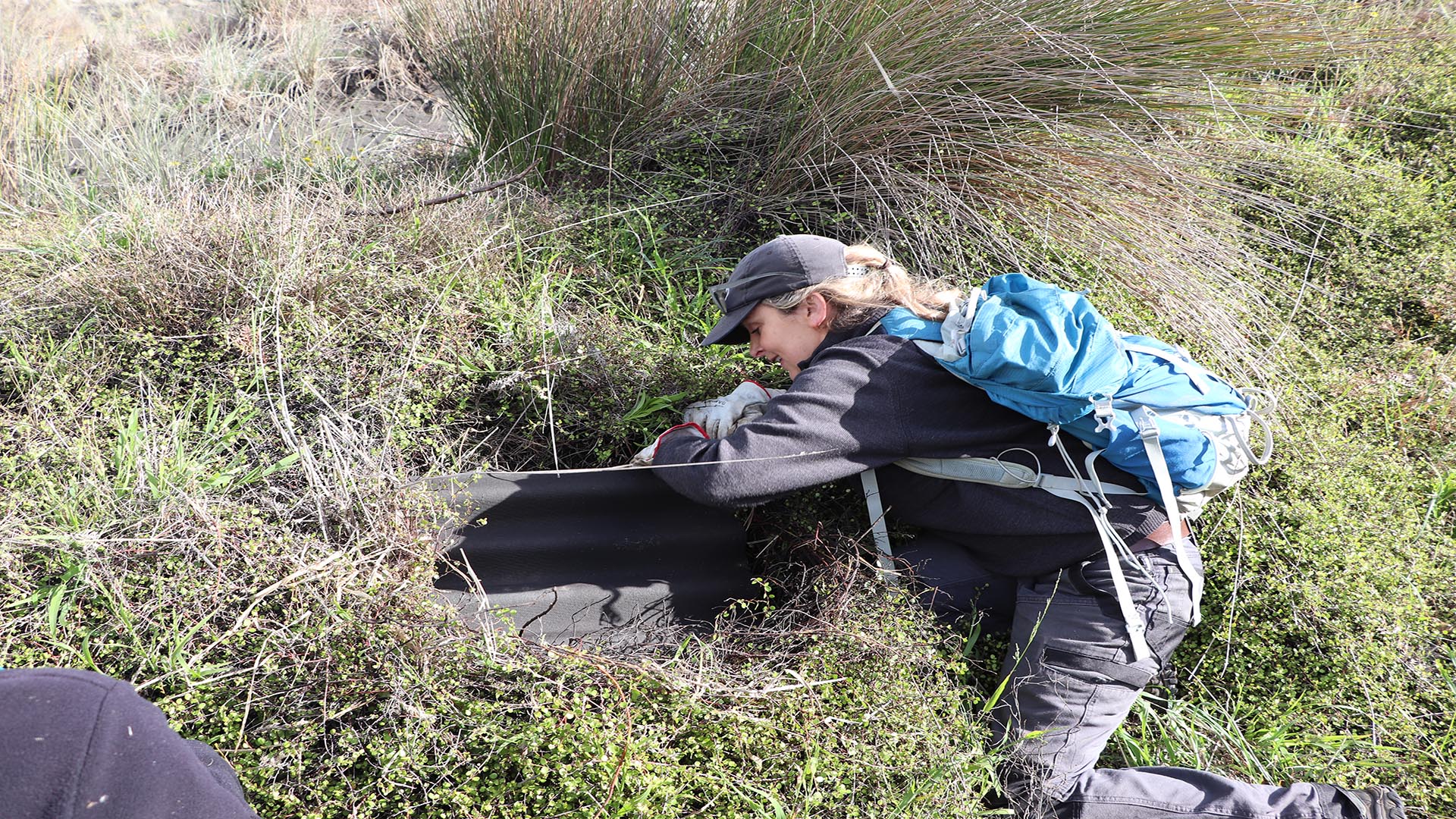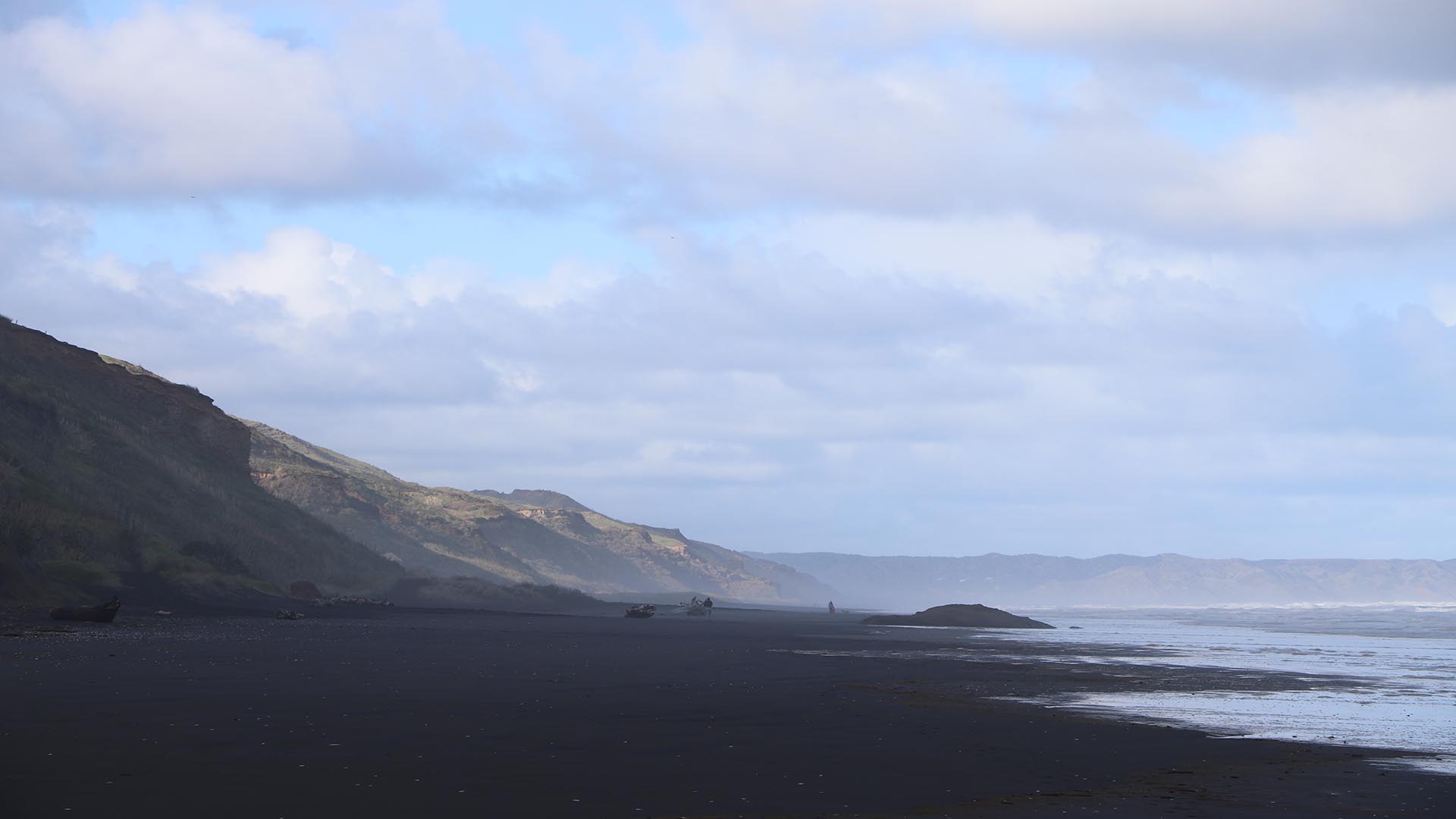Recognising the clear lack of knowledge on this threatened species, Auckland Council commissioned a targeted survey for the Muriwai gecko to gain a better understanding of its local distribution and established a monitoring programme to inform conservation objectives. Complementing this work, Auckland Zoo is undertaking to search for the gecko further afield to try and understand its wider distribution and status.
Since 2016, herpetologists have actively searched an array of potentially suitable habitats for Muriwai geckos to better understand their range and population. Very few geckos have been found. Despite the low gecko head count, these surveys were crucial in providing more information about the gecko’s habitat choices and therefore where other Muriwai geckos might survive - thereby directing the wider survey programme that Auckland Zoo ectotherm keepers have implemented. Senior keeper Ruth Smith and other members of the ectotherm team have been heading out to survey various locations north and south of the harbours bordering the gecko’s current known locations.
In June, Ruth and a small team of volunteers headed out to the windswept west-coast beach south of the Manukau. It’s theoretically a Muriwai gecko’s dream home location, with ideal habitat combining dense native wild dune grasses, surrounded by low lying fruit-producing native vegetation such as pohuehue (Muehlenbeckia). The survey sites are all recorded with a GPS and marked with a piece of flagging tape to help the team find the exact locations when they visit again months later.
The survey work is just the start of a five-year monitoring plan for the Muriwai gecko. Working according to a DOC Wildlife Act permit, teams will go out twice a year to check the sites for geckos and any found will be carefully captured, measure, weigh and determine the sex of the individual before recording their findings. They will then take photographs of each gecko and make a small temporary mark on its body (using a non-toxic pen). This is all part of a mark-recapture method which is commonly used to estimate population size and monitor trends over a specific period.



